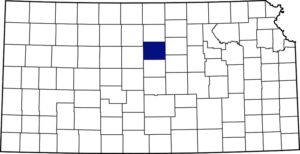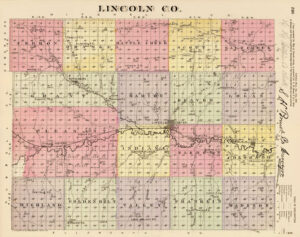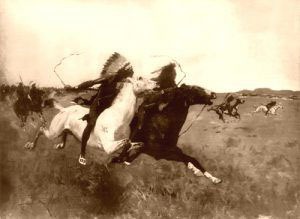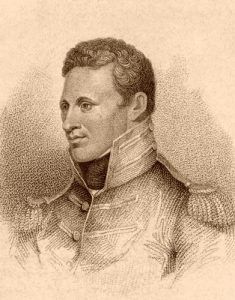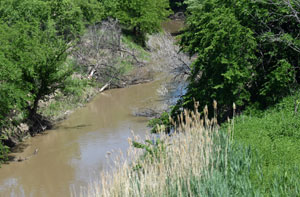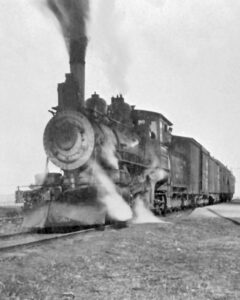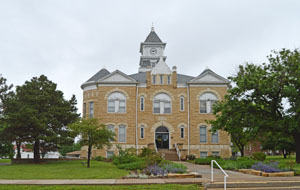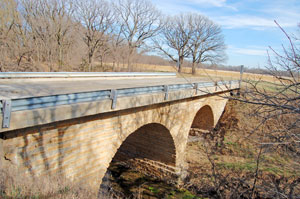Lincoln County, Kansas, the self-proclaimed “Post Rock Capital of Kansas,” is in the central part of the state. It was created in 1867 and named for President Abraham Lincoln. Lincoln is the largest city and county seat. As of the 2020 census, the county population was 2,939.
Lincoln County, Kansas
Due to Indian raids, the county remained an unorganized territory until 1870. During these three years, it was attached to Ottawa County as Lincoln Township for revenue and judicial purposes and later to Saline County when it was organized.
It is in the third tier of counties south of Nebraska and is bounded on the north by Mitchell County, east by Ottawa and Saline, south by Ellsworth, and west by Osborne and Russell. Its area is 720 square miles.
The surface of Lincoln County is a gently rolling prairie, with high, rough land breaking into bluffs in the southern and eastern portions. The Saline River Valley averages about a mile and a half in width, and the creek valleys comprise a little less than one-fourth of the area. Native trees along the streams are ash, oak, elm, box-elder, hackberry, walnut, and mulberry. The Saline River flows nearly east and west across the center of the county, and its main tributaries are Wolf, Spillman, Elkhorn, and Prosser Creeks. In its early history, springs were abundant, and good well water was found at a depth of 35 feet. Magnesian limestone, red and white sandstone, mineral paint, and potter’s clay were all found. Cement rock exists in the west, and large salt marshes were found in the northeastern portion, while salt springs abounded along the Saline River and Spillman Creek. Coal of fair quality was found and mined for local use. Stock raising was an important industry. The principal crops were winter wheat, oats, corn, and Kafir corn, and in 1907 there were 100,000 bearing fruit trees in the county.
It is believed that the first white men to visit what is now Lincoln County were the French under Etienne Veniard de Bourgmont in 1724. Zebulon Pike’s expedition in 1806 passed southwest across the county. Hunting parties went up the Saline and Solomon Rivers, but their stay was always short, leaving no mark upon the wilderness.
In 1859, a hunting party, of which James R. Mead was a member, visited the Saline Valley in Lincoln County and found the camp of a man who had raised the first civilized corn. In his account of the expedition, Mead said, “We moved to the place and built cabins, stable and a corral for the winter. Having completed comfortable quarters, known as Mead’s ranch, I set out to explore the country.” Michael Stearns, Thomas Boyle, Ade Spahn, and a man named Dean also hunted along the Saline in 1858-59 and nearly always camped at the mouth of Beaver Creek.
Although the country toward the head of the Saline River was not considered safe from Indian depredations in 1864, Charles, William, Marion Chase, John Moffit, and Flavius Moody started to make a settlement on Spillman Creek. They settled between Beaver Creek and the Saline River, where they built a log house and other buildings, but one disaster after another occurred. In May, they abandoned the place because of an Indian outbreak. In July, the Moffits, accompanied by two men named Taylor and Henderson, returned but were attacked by Indians while hunting near Rocky Hill. Two were killed, but the others managed to reach the house and, after watching for Indians for a day and a night, escaped to the settlements.
The first permanent homes of white men were built near where Beverly now stands by members of the First Colorado Cavalry, which had been stationed at Salina in 1865. They came up the Saline River and filed on all the desirable river claims from the county’s eastern boundary to the mouth of Beaver Creek. Six of these men, Richard Clark, James M. Adams, Isaac DeGraff, Edward E. Johnson, William E. Thompson, and Darius C. Skinner, who had crossed the plains before the war, returned during the winter of 1865-66 to occupy their claims. The following spring, others were added to the population. George Green and his wife came from Massachusetts, and their daughter, Lizzie, born October 18, 1866, was the first white child born in the county. W. T. Wild of England and John Dart of Connecticut also brought their families. J. J. Peate, William Gaskell, M. D. Green, Michael Ziegler, John S. Strange, Martin Henderson, and several others came in 1866, and the following year, the population was considerably increased by immigrants from the East, among whom were Louis Farley, Ferdinand Erhardt, and M. S. Green.
In 1868, a detachment of the Seventh United States Cavalry, under Colonel William Benteen’s command, was stationed for a time at Schermerhorn’s ranch, south of Rocky Hill, to protect the settlers.
Marion Ivy taught the first school in Martin Henderson’s house in 1868. David G. Bacon opened the second in 1869 in a dugout near the same place.
A petition asking for a separate county organization was sent to Governor James Harvey in 1870. On October 4, he appointed Isaac DeGraff, John S. Strange, Washington Smith commissioners, and F. A. Schermerhorn, clerk. The temporary county seat was established a few miles east of where Lincoln now stands. The board’s first meeting was held on October 6 at the house of John Strange. The commissioners divided the county into four civil townships — Colorado, Elkhorn, Salt Creek, and Indiana. At the election in November, I. C. Buzwick was elected representative; Cornelius Dietz, James Wild, and John Strange, commissioners; A. S. Potter, county clerk; Volney Ball, treasurer; D. C. Skinner, probate judge; T. A. Walls, register of deeds; R. B. Clark, sheriff; Myron Green, county attorney; J. A. Cook, district clerk; P. Lowe, surveyor, and Francis Seiber, coroner.
Mrs. Skinner taught the first public school at Monroe in 1870.
The election favored a change of the county seat. In January 1871, the county officers met on the open prairie, decided on a location about three miles east of the place designated by the governor, and called it Abram. The Abram Town Company gave the county a deed to lots for a courthouse. In April, the commissioners were petitioned to call an election to change the location of the county seat. The commissioners laid over the petitions then, but on February 19, 1872, an election was held, with Lincoln Center receiving 232 votes and Abram 176. On April 1, 1873, bonds for $4,000 were voted for a courthouse.
The legislature provided for a court in Lincoln County in March 1871, and James H. Canfield of Junction City presided over the first session, which began November 6, 1871.
Lincoln County did not have a newspaper until 1873 when F. H. Barnhart started the Lincoln County News. He sold his interest in the paper in 1873 and, on July 16, 1874, commenced the publication of the Farmer.
After the Indian campaign of 1874, the white people were allowed to pursue their way without molestation, and the progress of the county was more rapid, as well as more substantial.
The courthouse burned in 1898, and the present Romanesque-style limestone building was dedicated in 1900. The courthouse was listed on the National Register of Historic Places in 1976.
In 1910, transportation facilities were provided by the Union Pacific Railroad, which had a line nearly east and west across the county, following the general course of the Saline River. An Atchison, Topeka & Santa Fe Railroad branch ran to Barnard, in the northeast corner, giving the county nearly 40 miles of main track railroad.
The population peaked in 1910 at 10,142; the property’s assessed value was $21,198,950, and all agricultural products, including livestock, were $3,653,605.
The county’s economy continues to be based on agriculture and ranching in the following decades. Each decade, as technology improved and fewer people were needed to run the farms and ranches, the population fell to its current level of 2,939.
©Kathy Alexander/Legends of Kansas, updated August2024.
Also See:
Sources:
Blackmar, Frank W.; Kansas: A Cyclopedia of State History, Vol I; Standard Publishing Company, Chicago, IL 1912.
Cutler, William G; History of Kansas; A. T. Andreas, Chicago, IL, 1883.
Kansapedia
Lincoln County, Kansas
Wikipedia


